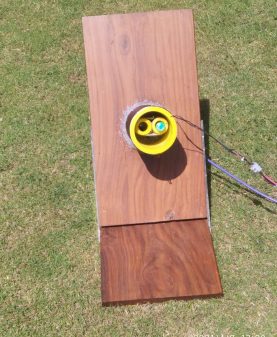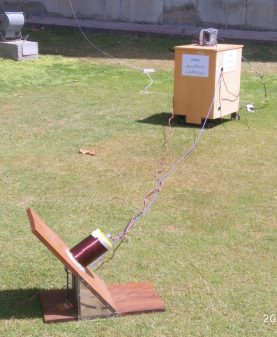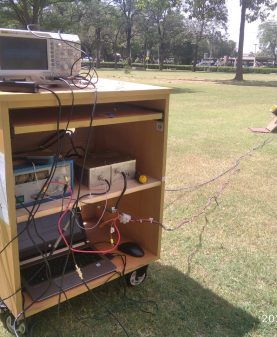| Researchers | Muhammad Nasir, Muhammad Shafique, Muhammad Sabieh Anwar |
| Time Frame | 2020-2021 |
| Supplementary Materials | ‘Pines’: Physlab’s Earth Field Free Precessional Nuclear Magnetic Resonance SystemFree nuclear precessional signals from multiple scans |
| Description | |
This is one of the most basic earth field nuclear spin precession detector. Earth’s field could be around 200,000 times smaller than the field generally used in commercial high field NMR spectrometers. This leads to devilishly small signals, mostly buried under noise and hides away the simplicity and directness of the principle of nuclear magnetic resonance. This basic precessional detector is named Pines, after Alex Pines, Sabieh’s mentor and post-doctoral supervisor. It is a simple detector, reminiscent of some Nobel prize winning work from Boch and Purcell about 70 years ago, albeit with modern, compact electronics and some intelligent circuit design that salvages any little bit of NMR signal. Water is polarized using a strong pulse inside an electromagnet. The homogeneity of the polarizer pulse is quite abysmal, but it doesn’t really matter. After the pulse is switched off in less than a millisecond, the magnetization is allowed to freely precess in the homogeneous magnetic field of the earth, leading to hypothetically very sharp lines. The field is small, so the NMR signal is in the audio frequency range. The strength of the signal is negligibly small. So the experiment is repeated many times building up the signal but suppressing the noise relative to it. After a reasonable number of experiments (that we call scans), we expect the tiny spectral peak from precessing protons to sneak its head above the noise floor. This is precisely what we do. There are many challenges in creating such a precessional detector. The electronics must pick up only the signal, and pick up most of it. Electromagnetic interference may wash away the signal, so there has to be some strategy for counteracting this interference. Furthermore, multiple scans create problems of drift in the terrestrial magnetic field during the daytime and coil heating. Careful timing is therefore needed. All in all, we can create a demonstration unit that can help see majestically and quietly precessing spins in earth’s magnetic field—spins whose initial orientation has been disturbed from equilibrium—a delight for students and instructors alike. This work is also the base of some research work that aims to connect hyperpolarization techniques with low field NMR.  Loading...
Loading...
| |


